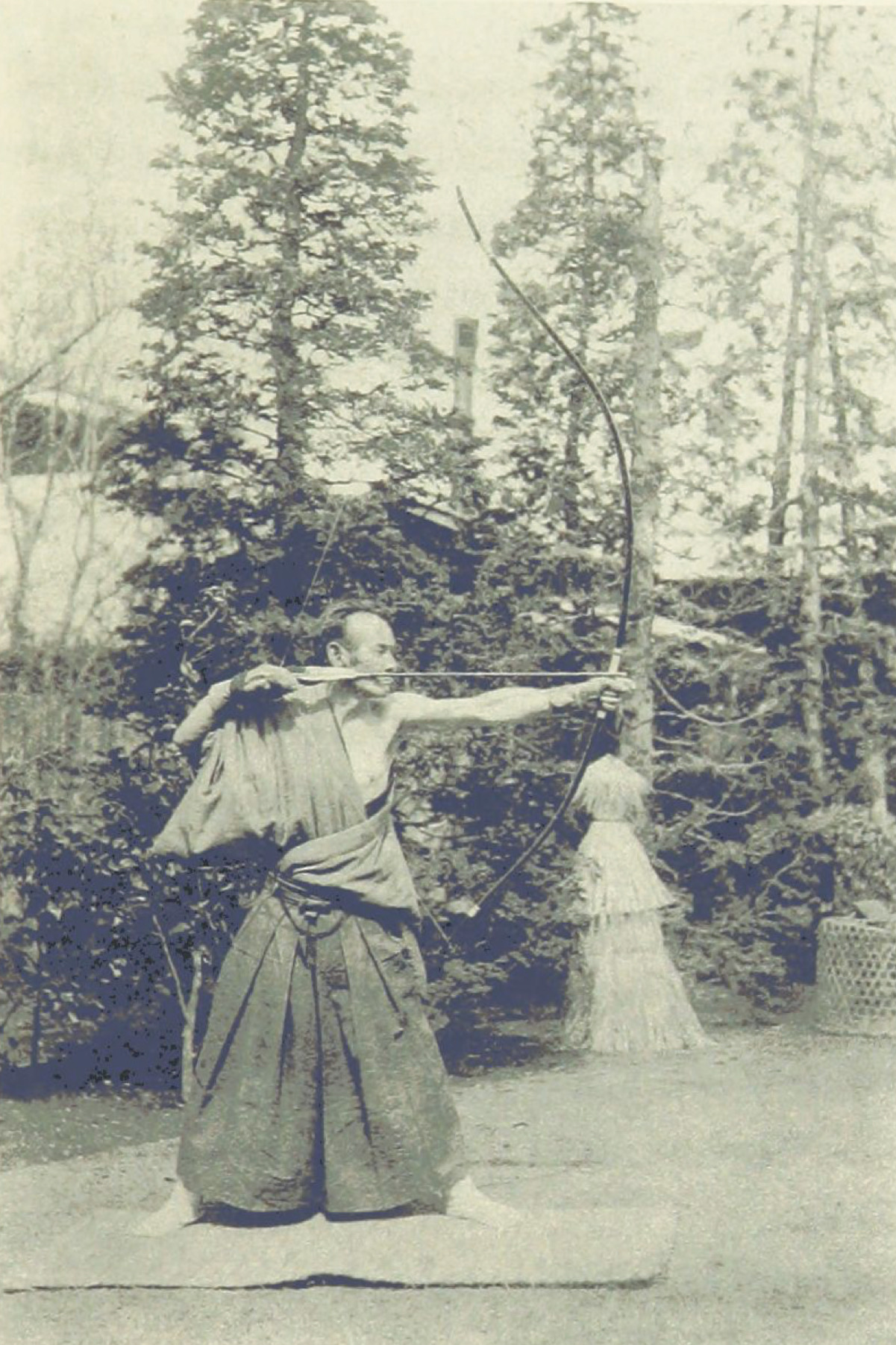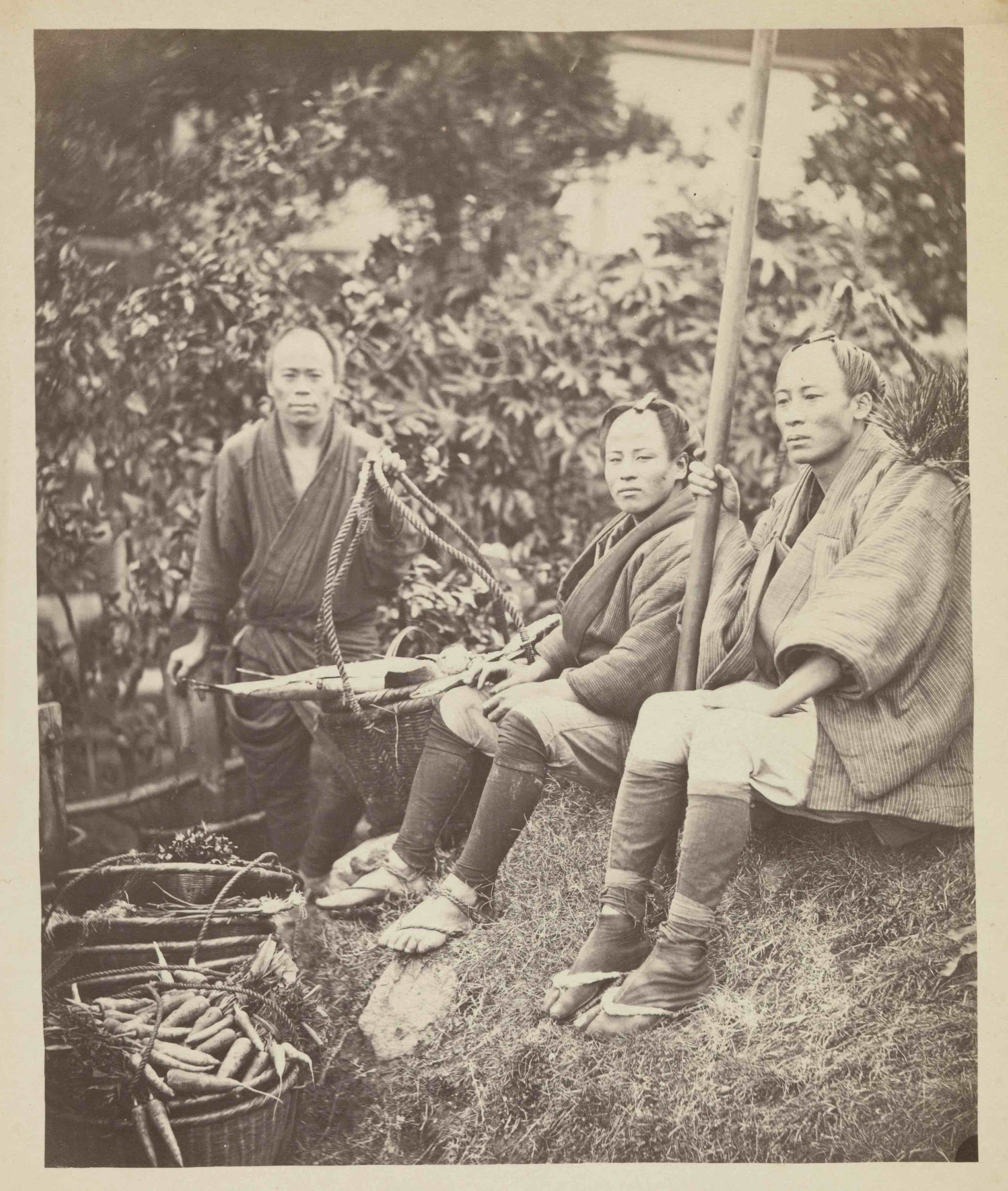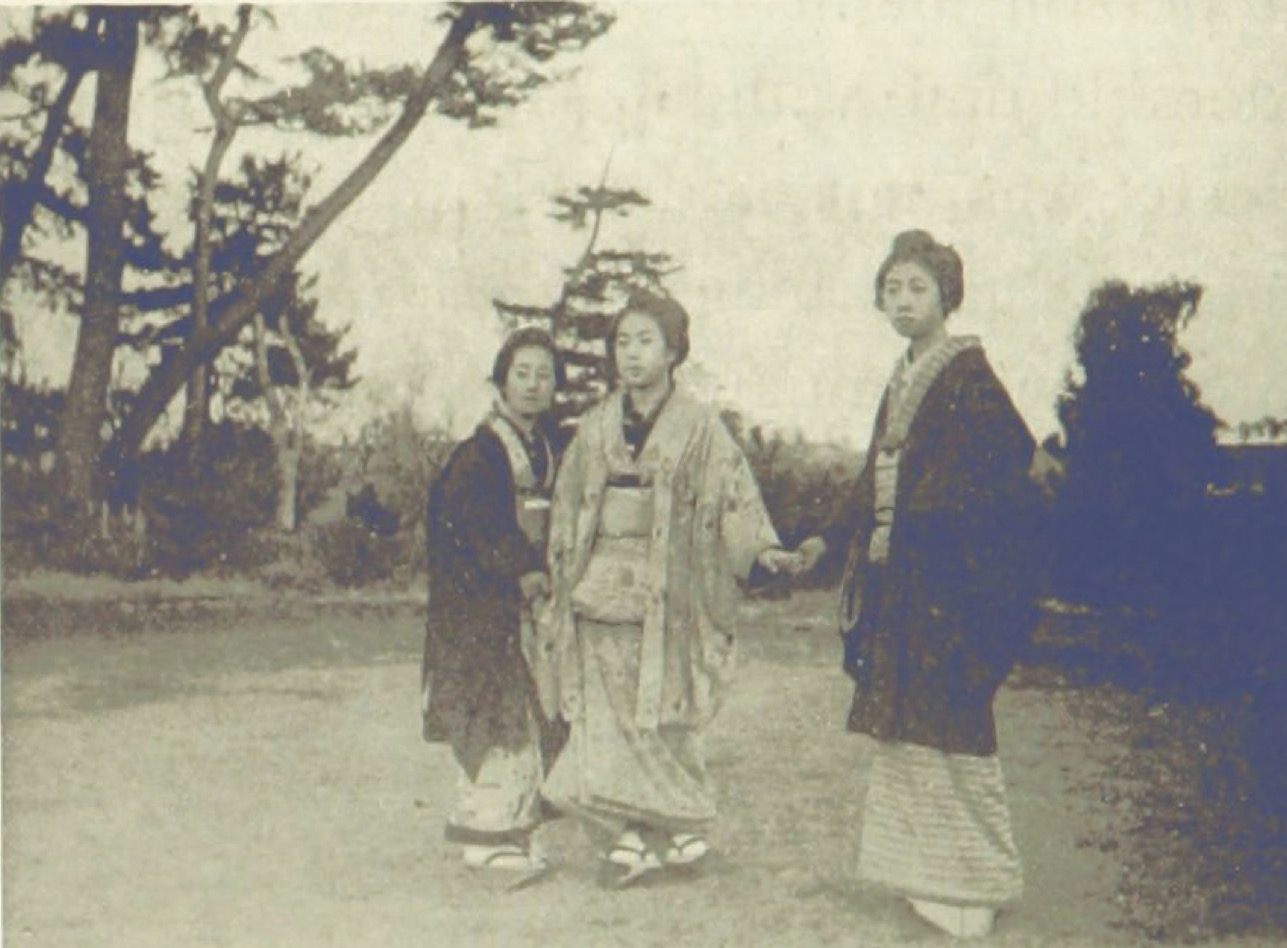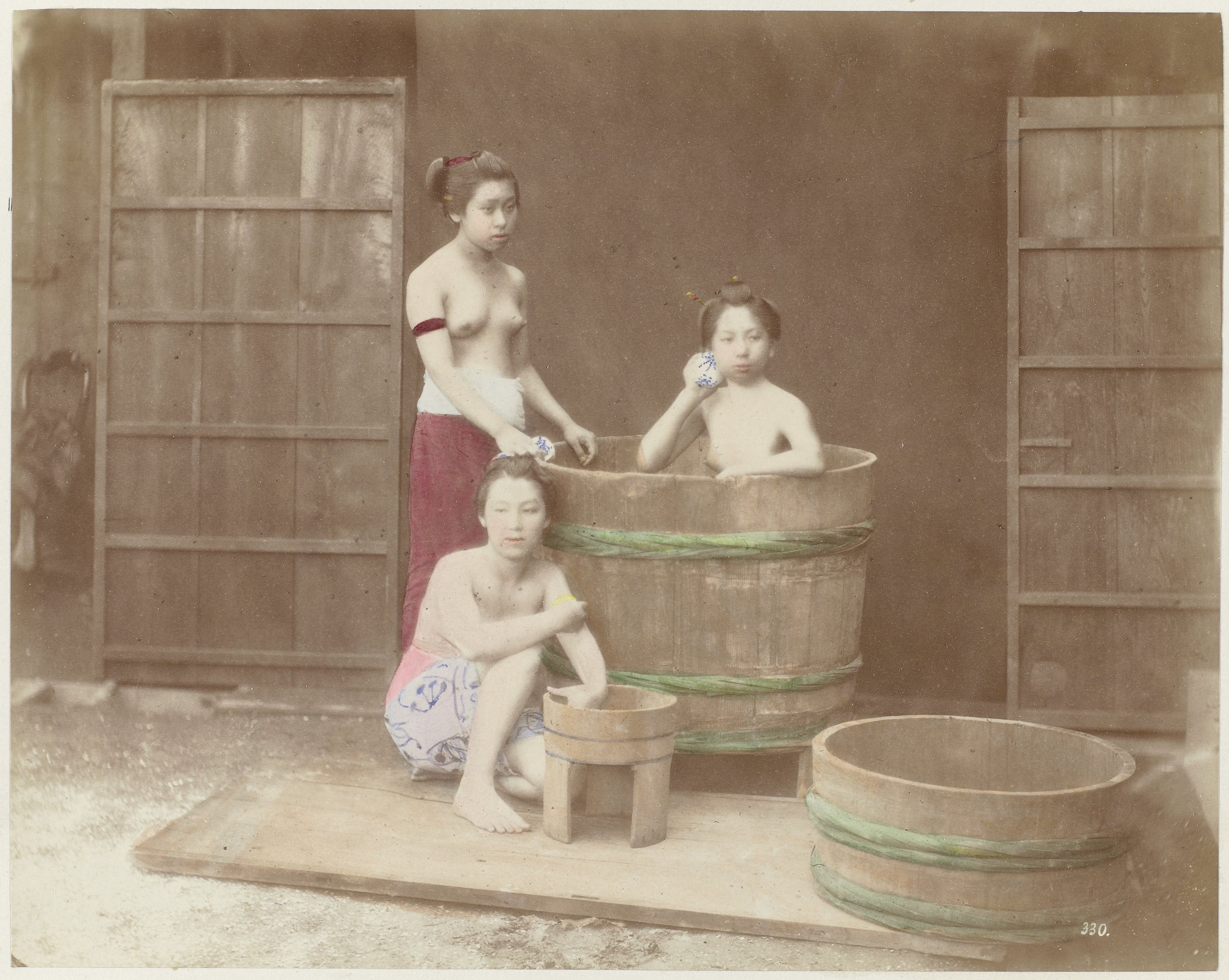‘Ah…Gives me the feels’
If you found yourself saying that as you walked down the street, what would you do in that moment?
Nowadays, many people probably immediately take a picture with their smartphones.
Legendary battlefield photographer Robert Capa once said,
“The Pictures are there, and you just take them.”
About 150 years ago, Japan was one of the most compelling places in the world.
Visitors from overseas were amazed by the scenery, the people, and the way of life, and they took a lot of pictures with the photo machines that were becoming popular at that time.
Many of the photographs taken at that time are kept in museums and art galleries around the country.
In this issue, we will introduce such ‘scenes of Meiji Japan photographed by foreigners’ from old photographs that are in the public domain.
Everyone with swords and bows

The glint in the eyes…so piercing! Let’s start with this photo that had the greatest impact on me. The photographer, Beato, was born in Italy. He is famous as one of the early photographers who photographed Asia, and was also a military photographer, taking pictures of the Shimonoseki (下関) War in 1864. Anyway, this man, the subject of the photo, has definitely killed someone before….. The fact that the photographer has captured an unusual atmosphere that makes us believe so even if there is no evidence to support such a belief, despite in the early days of photography, makes him indeed a professional.

Bauduin was a Dutch-born military doctor who came to Japan at the invitation of the Edo shogunate in 1862 with the help of his his brother, who was staying on Dejima (出島) Island in Japan. He worked to spread Dutch medicine in Tokyo, Osaka, and Nagasaki, and also worked to improve the Japanese educational system after the Meiji Restoration. He loved photography, and although an amateur, he photographed a variety of subjects in various places. The two men in the photo look like father and son.

Murdoch, a Scottish-born scholar and journalist, was invited to Japan in 1889 to teach European history and English at the First Higher Middle School. To his surprise, one of his students at that time was Natsume Soseki (夏目漱石). The book is a wild story about a woman named ‘Ayame’ and is illustrated not with illustrations, but with photographs taken in various places. The photographs were taken by William K. Burton, a photographer who was also a childhood friend of his.
Towns and rural communities

Burton came to Japan in 1887 after meeting Nagai Kyuichiro (永井久一郎), father of Nagai Kafu (永井荷風), a diplomat, in Europe. His maternal grandfather was a photography enthusiast, and he apparently began taking photographs himself. He was also a founding member of Japan’s first photography club, the Nihon Syashinkai (日本寫眞会), which was established with Enomoto Takeaki, famous for his involvement in the Boshin (戊辰) War, as its president. In the background of this photo is the Ryounkaku (凌雲閣) building in Asakusa (浅草), which was completed in 1890 and for which Burton was involved in the basic design. Below is a selection of Burton’s work from the same book.





This is again a work by the Dutch military doctor and photographer Bauduin. It is believed to have been taken between the years of Bunkyu (文久) 2 and Keio (慶応) 2. It clearly shows the atmosphere of people in a farming village in the Edo period. Although the location where the photos were taken is unknown, according to the museum’s explanation, Bauduin started taking photos as soon as he arrived at Dejima (出島), so perhaps the subjects of the photos were people in Nagasaki. It does not seem as if he had carefully prepared the poses or locations for the photographs, but rather as if he called out to the people on the spot to take them.

Stillfried was an Austrian photographer who roamed around the world as a young man; he visited Japan at least twice in the 1860s, and when he came to Japan again, he settled in Yokohama, where he learned photography techniques from Beato, whom I mentioned earlier, and later established his own photography studio. His photographic style was often posed photographs using a studio, and his colored photographs were exhibited at the Vienna World Exposition in 1873, etc., and the photo albums he made into gorgeous albums and sold became very popular among foreigners. Many Japanese photographers, such as Kusakabe Kinbei (日下部金兵衛), were taken under his wing.

At the end of the Edo period, portraits of Sakamoto Ryoma (坂本龍馬) and others, for example, were taken not on film but on glass. Most of them were ‘wet plate’ photographs, which used glass plates moistened with a chemical solution (the simpler dry plate method became popular from the 1870s). The resulting black-and-white photographs were then colored by hand to create ‘coloring photographs’ like these.
Ladies

As the title of the book is ‘Ayame-san’, many of the photographs in this book introduced earlier are of women. They are all beautiful women. Incidentally, Murdoch married a Japanese woman named Okada Takeko (岡田竹子) in 1899 and lived in Shiba-Takanawa (芝高輪).



Farsari was an Italian photographer based in Yokohama during the Meiji era. His photographs were also very popular and spread through books and photo collections, and it is said that his photographic skills greatly influenced the improvement of Japanese photographic techniques. However, there are various theories as to who took this photograph, and some believe it was the aforementioned Kusakabe Kinbei. The Amsterdam Museum of Art considers this as an asumption.

This is another work by Stillfried. He must have been astonished when he saw this pose in a teahouse somewhere. I wonder if there is a record of him saying, “WHY JAPANESE PEOPLE!” Incidentally, this pose is called ‘shachihoko gei (しゃちほこ芸)’, which is an essential skill for geisha in Nagoya even today. However, when photographed on a glass wet plate, it is necessary to hold still for about 10 seconds. Look closely at her expression.

Perhaps the actual bath was too dark. This is one of the pictures that seems to have been taken outdoors with props. My big question is, if a foreign photographer had asked to take a picture of a woman bathing in a bathtub, would the people of the city have responded willingly to such a request? “Can I take a picture of you taking a bath?” is definitely out of the question today…….
Bonus

From the end of the Edo period to the Meiji era, many photographers took pictures of Japan. They must have been amazed at how strange people were! but they themselves must have been strange enough to the Japanese people to be hiding in a strange black box, excitedly giggling about something or other. The fact that there are still ukiyoe prints depicting them taking pictures seems to indicate this.
Encountering other cultures is what it’s all about
For Japan, the period between the end of the Edo period and the meiji Era was a time of encountering different cultures.
Numerous photographs of the period show the surprise and excitement felt by people who visited Japan for the first time, and their excitement to preserve the beauty of the country.
On the other hand, these scenes were ‘commonplace’ to the people who were the subjects of the photographs.
It is difficult for us to realize how much ‘beauty’ we have in ourselves.
Perhaps it is encounters and communication with people we do not normally interact with that makes us aware of this.
What is ‘Daredemo (anyone) Museum’?
Anyone can create their own virtual museum using public domain artworks. Each staff member of Waraku (和樂) web curates their own museum, exploring the appeal of Japanese arts and crafts from their own unique perspective. The ‘Daredemo Museum’ is distributed not only through web media, but also through various media platforms, such as social networking accounts and audio content, in a way that suits each platform. We explore new ways to enjoy art.
◆‘Daredemo Museum’ Project Launched! Let’s create your own museum with public domain works!
)
Director of this museum
Ando Totonou
Born in 1986. I’m either writing about something or getting other people to. I also run a small company whose main business is “Gagaku (雅楽) x Inbound,” but my daily battles are with cats and pigeons that have made themselves at home in my house. Recently, I even feel a strange friendship blooming with them.
This article is translated from https://intojapanwaraku.com/rock/museum/197689/


























